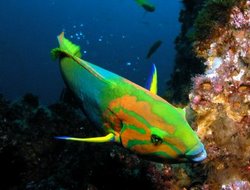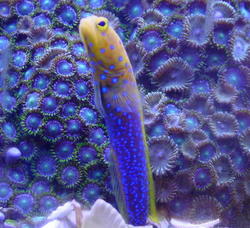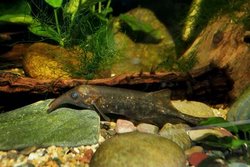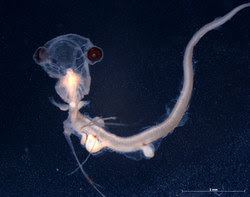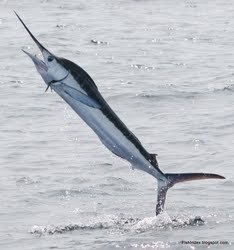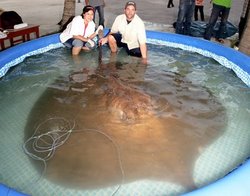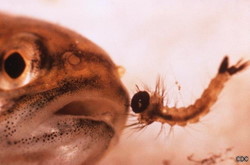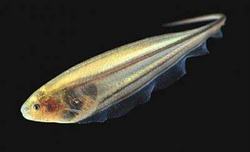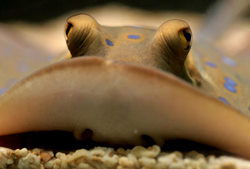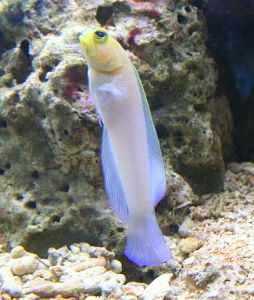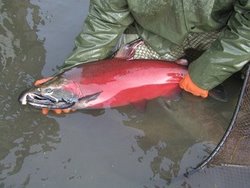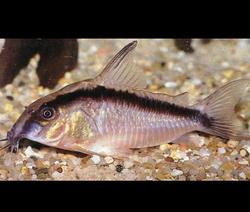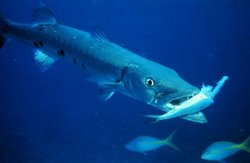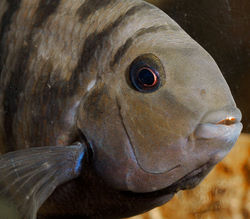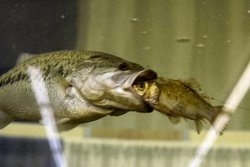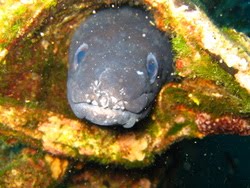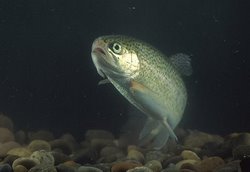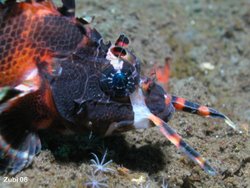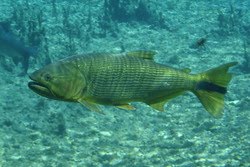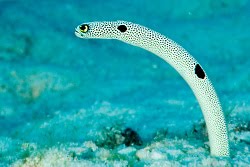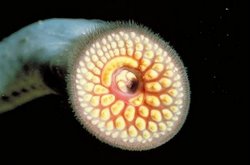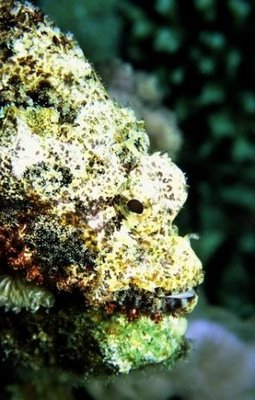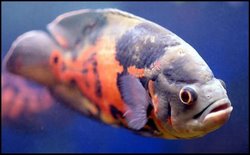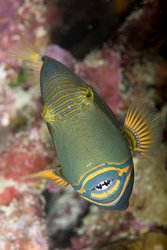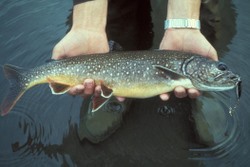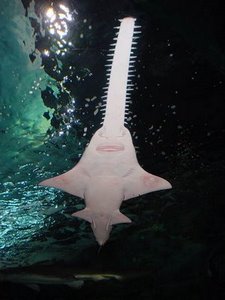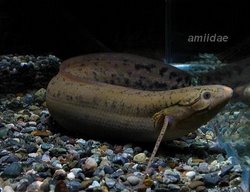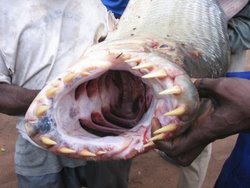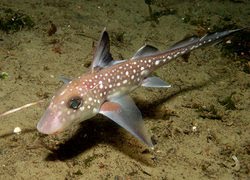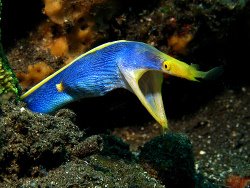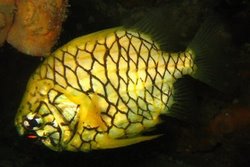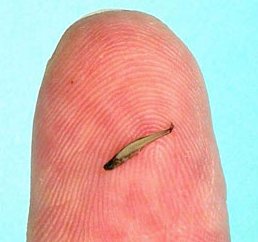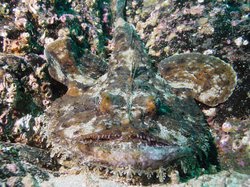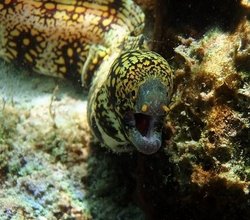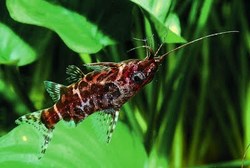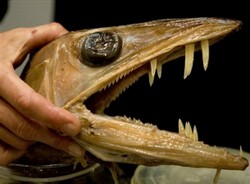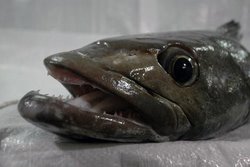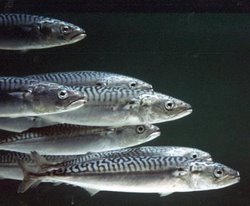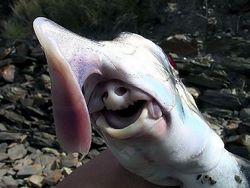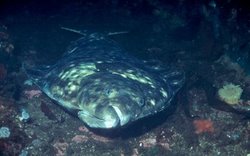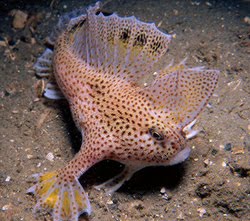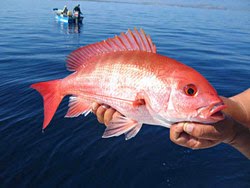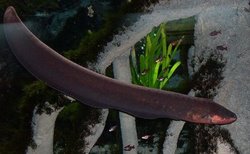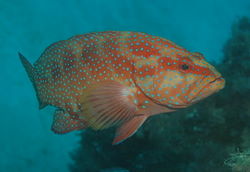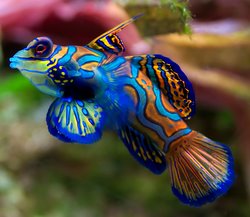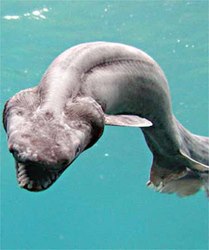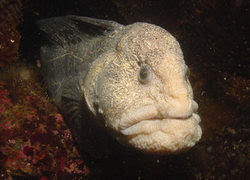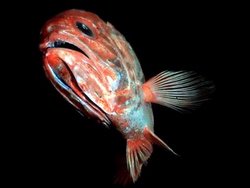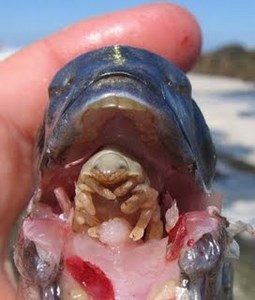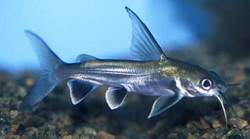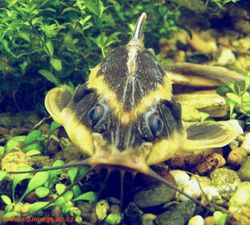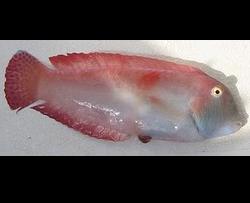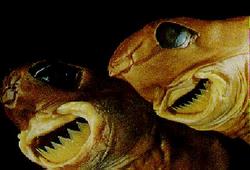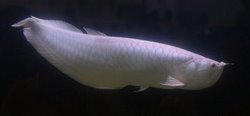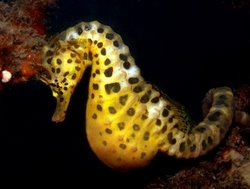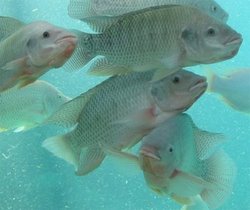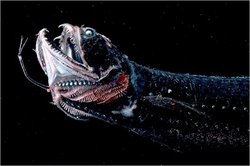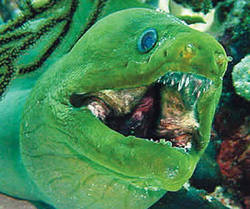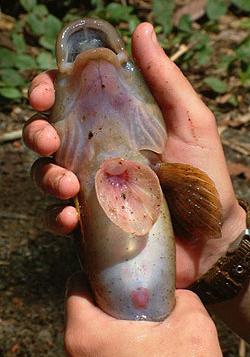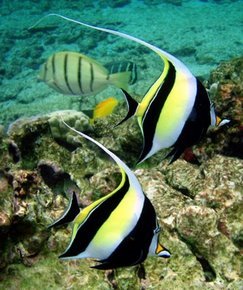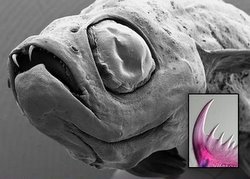 Tire Track Eel or (Mastacembelus armatus) is not a true eel at all, in fact it is just an elongated freshwater fish. Also known as the Spiny Eel this fish is carnivorous and should be fed bloodworms, earthworms and even some pellet foods. You can even feed these fish right out of your hand! The Tire Track Eel will bury itself so watch out if you have this fish in an aquarium setting, it will dig up your plants. This fish can grow to 90cm and weigh in at about 500 grams.
Tire Track Eel or (Mastacembelus armatus) is not a true eel at all, in fact it is just an elongated freshwater fish. Also known as the Spiny Eel this fish is carnivorous and should be fed bloodworms, earthworms and even some pellet foods. You can even feed these fish right out of your hand! The Tire Track Eel will bury itself so watch out if you have this fish in an aquarium setting, it will dig up your plants. This fish can grow to 90cm and weigh in at about 500 grams.  The Tire Track Eel is often found in highland streams to lowland wetlands in places like India, Pakistan, Sumatra, Sri Lanka, Thailand, Vietnam, Indonesia and other parts of South East Asia. In some places of the world this fish is eaten and quite tasty from what I have heard. You can check out the Tire Track Eel in an aquarium toying with a Blue Lobster in the video below.
The Tire Track Eel is often found in highland streams to lowland wetlands in places like India, Pakistan, Sumatra, Sri Lanka, Thailand, Vietnam, Indonesia and other parts of South East Asia. In some places of the world this fish is eaten and quite tasty from what I have heard. You can check out the Tire Track Eel in an aquarium toying with a Blue Lobster in the video below.If you have any additional information about the Tire Track Eel please leave us a comment.





